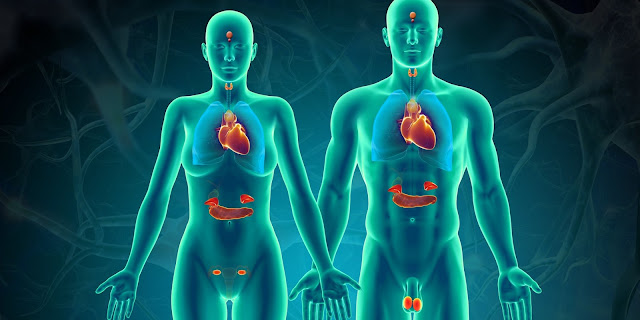Importance of Personal Protective Equipment (PPE)
Personal protective equipment, commonly referred to as PPE, plays a vital role in ensuring workplace safety. From hardhats on construction sites to lab coats in scientific laboratories, PPE aims to shield workers from health and safety hazards that may be present in their occupations or work environments. With the proper selection and use of PPE, injuries, illnesses and fatalities can be significantly reduced. This article will outline the importance of PPE and explain the types used in various industries.
What is PPE?
Personal Protective Equipment, or PPE, refers to protective clothing, helmets, goggles, or other garments or equipment designed to protect the wearer's body from injury or infection. The need for PPE arises whenever there is exposure to potential hazards like chemical, radiological, physical, electrical, mechanical, or various other types of hazards. PPE is designed for each specific potential hazard and is intended to protect many parts of the body including eyes, face, hands, feet and head.
Importance in the Workplace
PPE plays an absolutely crucial role in workplace safety across nearly all industries. Without proper PPE, employees are at much greater risk of harm from hazards present in their work environments. Some of the key importance of PPE in the workplace include:
- Protection from Hazards: As mentioned, PPE protects various parts of the body from specific workplace hazards like chemicals, moving machinery, falling objects, electrical hazards, heat/flames and more. This shielding reduces injuries and fatalities.
- Compliance with Regulations: In most countries, occupational safety laws and regulations require employers to equip employees with PPE suitable for the job hazards. Non-compliance can result in hefty penalties and legal consequences for companies.
- Maintain Productivity: By protecting worker health and safety, PPE helps reduce injuries which can otherwise result in lost time, medical costs and lost productivity. Workers remain healthy and on the job.
- Company Liability: Providing appropriate PPE demonstrates an employer has taken reasonably practicable steps to ensure worker safety. This mitigates liability in the event of an accident.
Types of PPE Used Across Industries
The construction industry
Construction is one of the most dangerous industries to work in with workers facing hazards from heavy machinery, falling objects, electrical systems, chemicals and more. Key types of PPE used in construction include:
- Hard hats: Protects the head from impact from falling/flying objects.
- Safety glasses/goggles: Protects eyes from debris, dust and chemicals.
- Hi-visibility clothing: Improves visibility of workers in low-light or crowded worksites.
- Steel-toe boots: Protects feet from compressed injuries caused by heavy objects.
- Gloves: Protects hands from cuts, burns and harsh chemicals.
- Harnesses and lanyards: Required for any work performed at elevated heights.
- Respirators: Filter out dust and fumes from activities like demolition or cutting.
The manufacturing industry
Manufacturing environments often utilize hazardous machinery, heavy lifting, high temperatures, airborne particles and chemicals. Common PPE in manufacturing includes:
- Safety glasses/goggles/face shields: Protect eyes from impact or splash hazards.
- Ear plugs/muffs: Reduces noise-induced hearing loss from loud machinery/processes.
- Steel-toe boots: Protect feet from compressed injuries from dropped heavy objects.
- Gloves: Protect hands from burns, cuts and exposure to chemicals.
- Flame-retardant clothing: Used near heat/flames generated during manufacturing processes.
- Respirators: Filters airborne particulate matter generated during grinding, sanding etc.
The healthcare industry
In healthcare facilities like hospitals and clinics, staff face risks like infectious diseases, electrical hazards, radiation, chemicals and violence. Critical PPE here includes:
- Gloves: Latex/nitrile gloves protect hands from exposure to bodily fluids and contaminated surfaces.
- Gowns: Isolate clothing from exposure to infectious agents during procedures or care activities.
- Face shields/masks: Provides barrier against infectious diseases spread through air/droplets.
- Goggles/face shields: Protect eyes from splashes or sprays of bodily fluids during procedures.
- Shoe covers: Acts as a barrier to isolate shoes and prevent carrying contaminants.
Proper Selection and Use of PPE
For PPE to be effective, it is important that workplaces properly select, maintain and train employees for the appropriate use of PPE. Key aspects of effective PPE programs include:
- Hazard assessment to determine risks present in each job task or function.
- Selection of PPE suited to provide protection from identified risks/hazards without introducing new ones.
- Compliance with all technical standards and certifications required for the PPE.
- Regular inspection and replacement of PPE as per manufacturers' guidelines.
- Employee training on proper donning, doffing, cleaning, disposal and limitations of issued PPE.
- Enforcement of PPE policies and compliance by both managers and workers.
In conclusion, personal protective equipment plays an absolutely vital role in maintaining workplace safety and reducing injuries across industries. By thoughtfully selecting and properly using PPE suited for the job hazards, employers fulfill their responsibility of protecting worker health while also avoiding legal penalties and productivity losses. When combined with further hazard controls and safety compliance, PPE ensures employees return home safely at the end of each working day.
Get
more insights on this topic: https://www.newsstatix.com/personal-protective-equipment-essential-for-workplace-safety/




Comments
Post a Comment